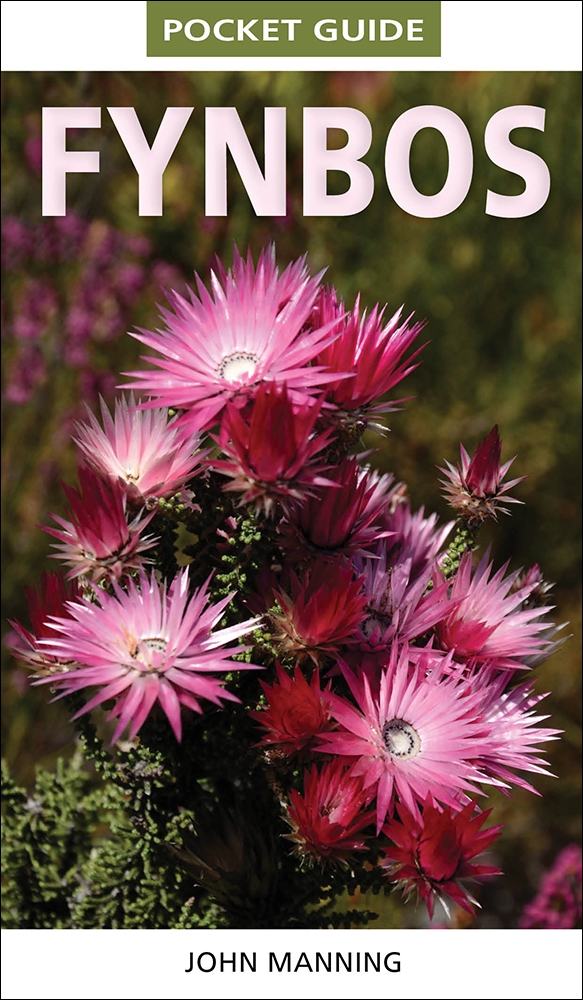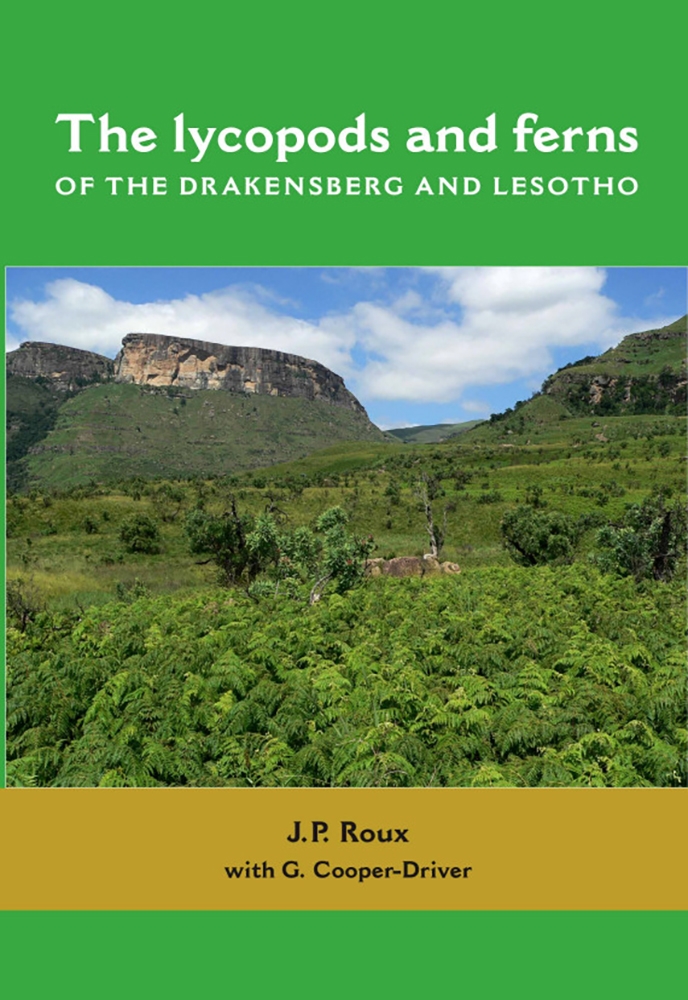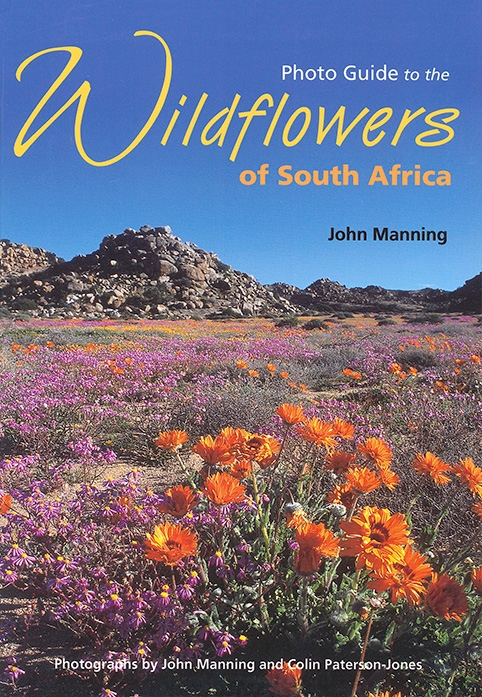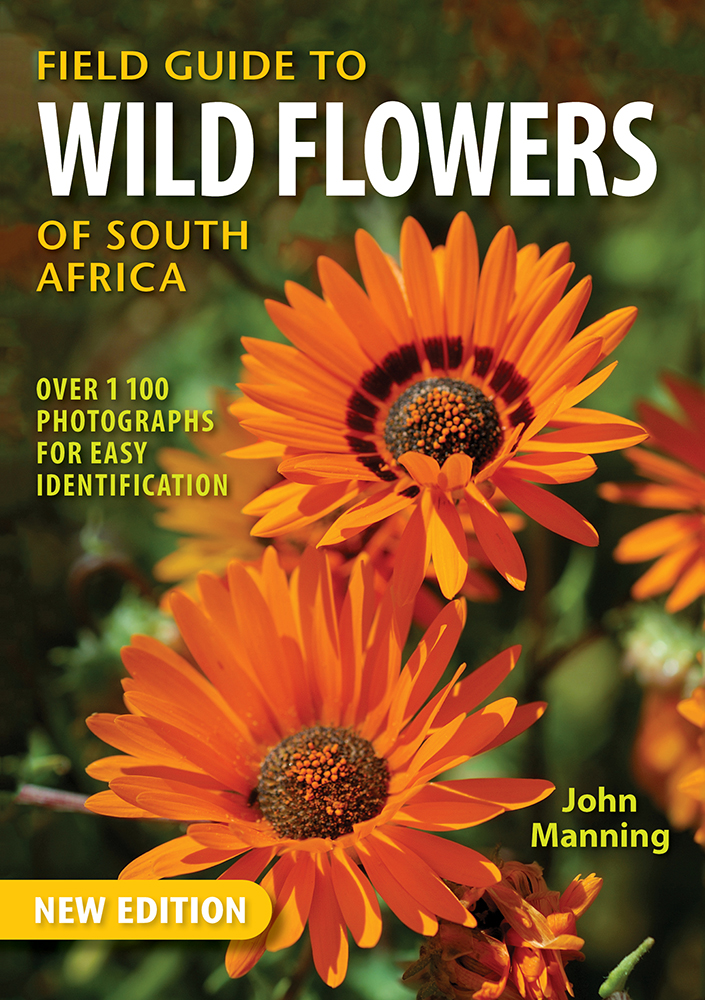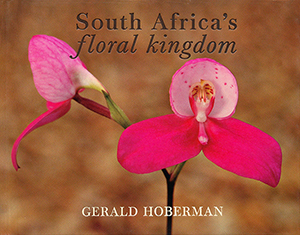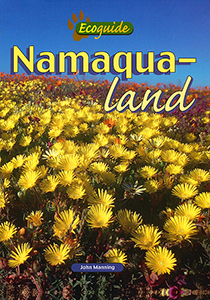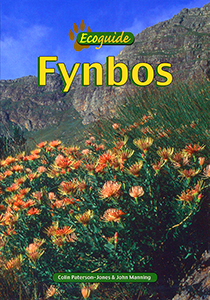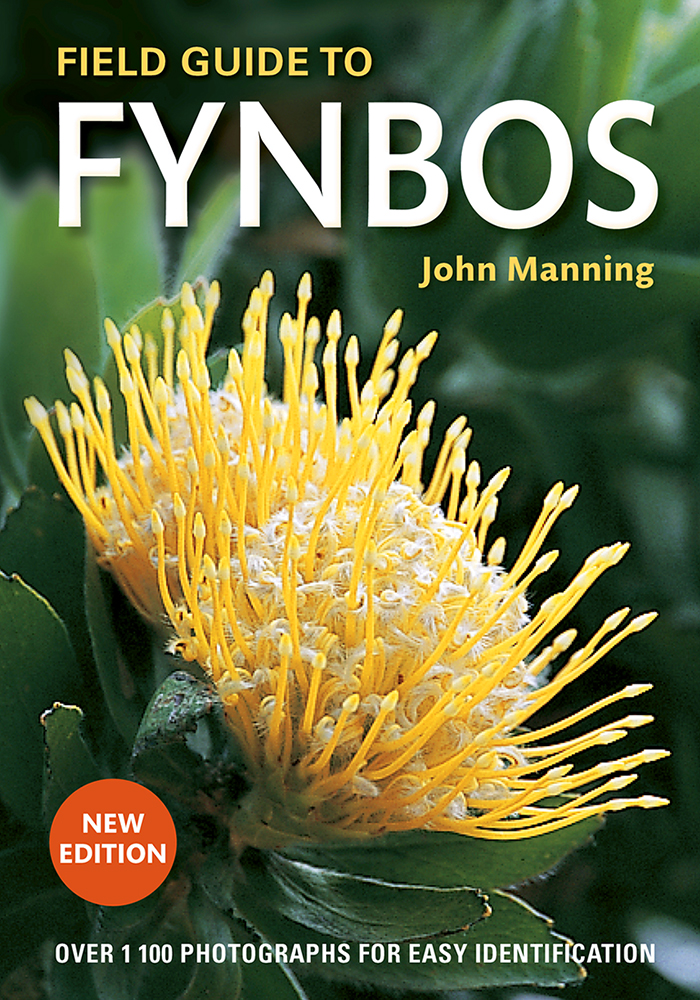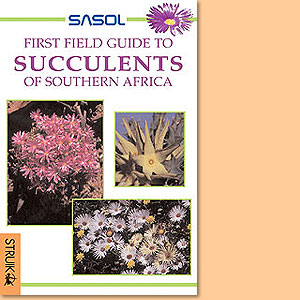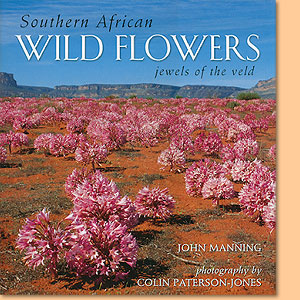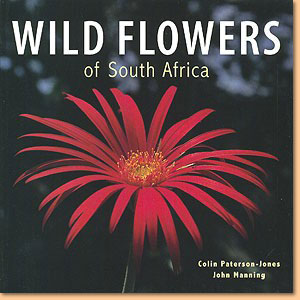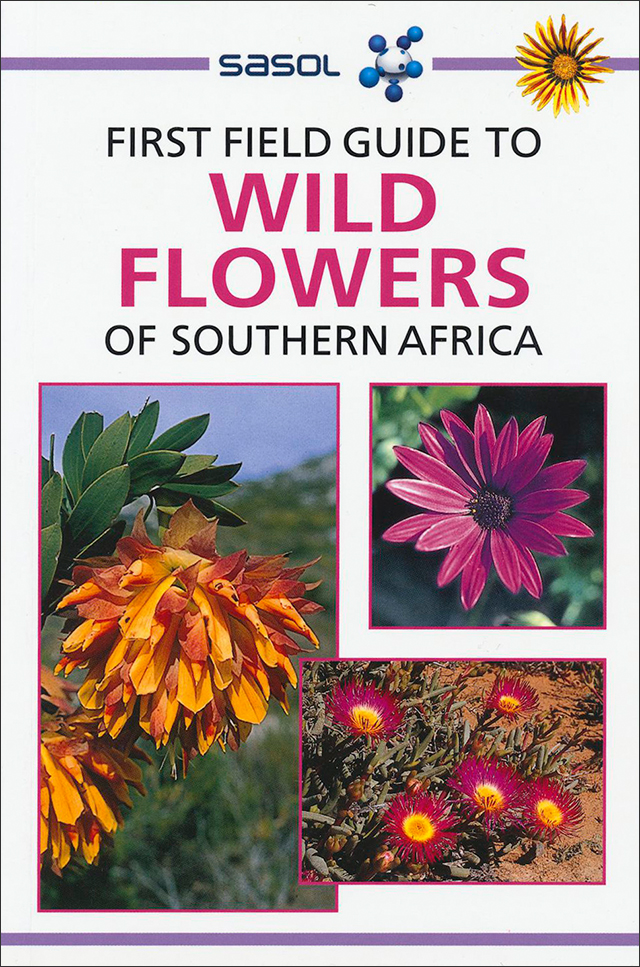Fynbos (Pocket Guide), by John Manning
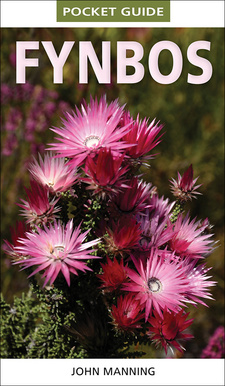
Fynbos (Pocket Guide), by John Manning. Penguin Random House South Africa. Struik Nature. Cape Town, South Africa 2020. ISBN 9781775846956 / ISBN 978-1-77-584695-6
Fynbos (Pocket Guide), by John Manning. This pocket guide is an invaluable aid for anyone interested in South Africa’s astonishing floral treasures.
[...] The first evidence of the extraordinary flora of the Cape reached Europe in the form of a dried flower head of Protea neriifolia, collected from the shores of False Bay by the crew of a passing East Indiaman. It was soon followed by bulbs of several species of amaryllis, hyacinth and iris. The flowering of these plants in Holland in the first years of the seventeenth century ignited a passion for fynbos flowers that has shown no sign of abating. The term 'fynbos' (from the Dutch, fynbosch) was originally applied by the settlers at the Cape to any sort of small woodland growth that did not include the timber trees that were essential to their survival. It was only in the latter half of the twentieth century that it gained international currency as the appropriate name for the distinctive heathland vegetation of the southwestern Cape. Fynbos is the dominant natural vegetation of the southwestern part of South Africa, occurring mainly on the rocky sandstone and quartzite formations of the Cape Fold Mountains, but also on exposures of sand and limestone along the coastal shelves. On the West Coast, these coastal sands and their associated communities of sand plain fynbos extend northwards almost to the Namibian border. Along the southern Cape coast, outcrops of quartzitic rock allow grassy fynbos to thrive as far east as Grahamstown. Beyond this, outlying fynbos communities occur on sandstone outcrops in southern KwaZulu-Natal near Port St Johns and scattered along the edge of the Drakensberg Mountains and eastern Escarpment as far north as Zimbabwe. Although the fynbos communities of the eastern seaboard are structurally similar to Cape fynbos, they are sufficiently distinct to be classified separately. In this book we concern ourselves only with Cape fynbos. Fynbos is an evergreen, hard-leaved shrubland occurring on nutrient-poor soils, especially those derived from heavily leached sandstones or alkaline limestones. It is dominated by small- and leathery-leaved shrubs, in association with evergreen, grass-like perennials. True Cape fynbos is distinguished from other fynbos communities by the presence of Cape reeds or restios. It is unique among vegetation types in the high numbers of heaths, proteas, restios, buchus and wild irises. Fynbos is also distinguished by the presence of four endemic plant families, i.e. all of their species grow only in fynbos. Fynbos occurs mostly on acidic (pH 4.4 or less), coarse-grained soils lacking especially in available nitrogen and phosphorus. It rarely develops where the annual rainfall is less than 400mm per annum or where droughts are common. It also grows on the porous, infertile soils on limestones. True fynbos vegetation is analogous to the heathlands of other regions with a Mediterranean climate. It excludes renosterveld, another evergreen, fine-leaved vegetation type of the southwestern Cape. Fynbos shrubs vary greatly in height and density but are mostly richly branched with twisted boles - true trees are virtually absent. The understorey always contains a conspicuous admixture of Cape reeds or restios, which may become dominant in some communities. Grasses are uncommon in most fynbos communities. Bulbous plants are normally plentiful but are generally evident only in the year or two after wildfires clear the vegetation. Most stands of fynbos contain many species, in some cases up to 120 different kinds in a single 100m2 quadrat, and it is rare that a single species dominates a community, except locally. Within Cape fynbos, botanists recognise several different plant communities, distinguished by their dominant elements. [...]
This is an excerpt from Fynbos (Pocket Guide), by John Manning.
Title: Fynbos
Series: Pocket Guide
Author: John Manning
Publisher: Penguin Random House South Africa
Imprint: Struik Nature
Cape Town, South Africa 2020
ISBN 9781775846956 / ISBN 978-1-77-584695-6
Softcover, 11 x 18 cm, 176 pages, numerous colour photos and maps
Manning, John im Namibiana-Buchangebot
The lycopods and ferns of the Drakensberg and Lesotho
The lycopods and ferns of the Drakensberg and Lesotho is the most comprehensive account of lycopod and fern species occurring in the Drakensberg and Lesotho region.
Photo Guide to the Wildflowers of South Africa
This excellent photo guide includes nearly 900 of the most common and conspicuous wildflowers that occur in South Africa and the neighbouring countries of Lesotho, Swaziland and Namibia.
Field Guide to Wild Flowers of South Africa
Manning's Field Guide to Wild Flowers describes more than 1100 of shrubs and herbs of South Africa.
South Africa's Floral Kingdom (Hoberman)
South Africa's Floral Kingdom is the collaboration of Gerald Hoberman and John Manning, an authority on the South African flora.
Ecoguide Namaqualand
This Ecoguide describes 200 wildflowers and their background on birds, insects, spiders, reptiles and mammals of Namaqualand.
Ecoguide Fynbos
This ecoguide introduces 400 wildflowers and birds, insects, spiders, reptiles and mammals in their environment in the Fynbos region of South Africa.
Field Guide to Fynbos
Field Guide to Fynbos features 1150 species of Fynbos, focusing on the most common and conspicuous wild flowers of South Africa.
First Field Guide to Succulents of Southern Africa
Information at a glance through superb photographs, maps and easy-to-read text
Southern African Wild Flowers: Jewels of the Veld
Celebrates the beauty of Southern African wild flowers that truely are to be said the jewels of the veld along the landscapes.
Wild Flowers of South Africa
Offers a glimpse into South Africa’s rich floral heritage, enabling the reader to enjoy our most spectacular flowers
First Field Guide to Wild Flowers of Southern Africa
First Field Guide to Wild Flowers of Southern Africa is an invaluable resource for the beginner, providing information at a glance through superb photographs, maps and easy-to-read text.

